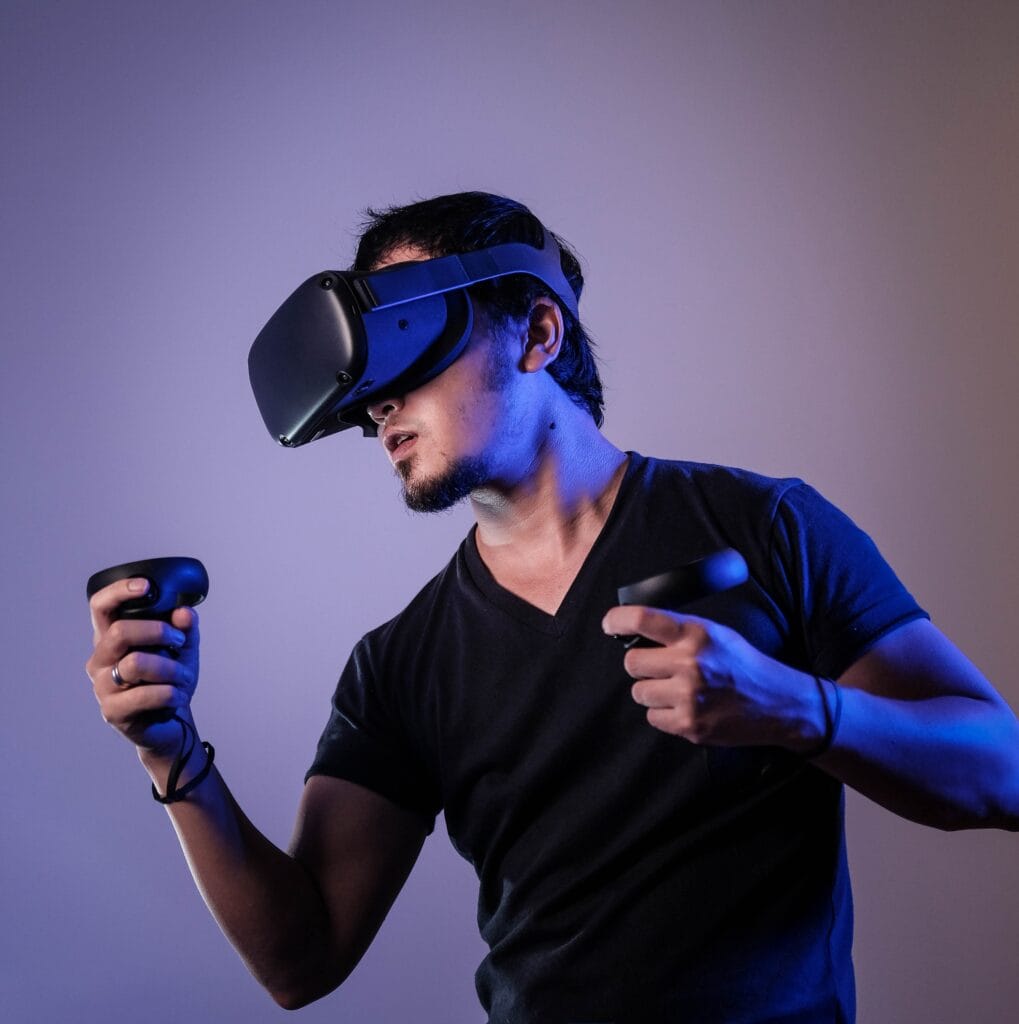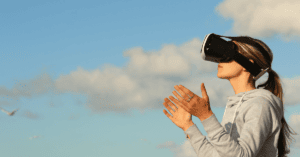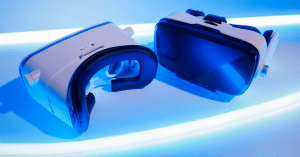
Have you ever wondered how 360 videos are made? Maybe you want to create one to impress your family and friends. Or, you might have a business and you want to integrate immersive experiences for your customers.
With today’s technology and gadgets, VR videos can be created by anyone. Fancy equipment is not needed but, to make a VR video you need a 360° camera. It can be easy to use 360 videos to share immersive content with an audience.
This article will help you understand how VR videos are made and what is needed to make one. We will also tell you how real-world environments are integrated into virtual reality.
What is a 360-degree video?

A 360 video is a spherical video that is recorded in all directions, giving you a 360-degree view of a place or an object. It allows viewers to immerse themselves in a place as if they are physically there, or view an object as if it is right in front of them.
360 videos are usually viewed with VR headsets for an immersive virtual reality experience. But, most web browsers support 360 videos so you will still be able to enjoy and experience places that are in a 360-degree view. It will not be as immersive as with a VR headset, but it is totally possible.
You can watch 360 videos on Facebook and Youtube. You can use your mouse to click and drag around the video to look around the scene. There are videos that have arrows on the top left-hand corner of the screen where you can click in order to move the camera around.
Equipment needed to make VR videos

Unlike a normal video recording where you can use a regular camera, you need a 360-degree camera to make a VR video.
But, making a VR video is not as hard as it seems.
You don’t need a lot of equipment but you do need to have the right camera to make your video immersive.
Making a VR video is as straightforward as recording a regular video. You just need a 360 camera to capture all directions. If you do not have a 360 camera, you can use a rig of multiple cameras to be able to record footage in a 360-degree view.
If you want to have good-quality audio for your videos, you might also want a camera that has built-in audio recording capabilities.
Let’s take a look at what you need in order to make VR videos.
Camera
To record VR videos, you need an omnidirectional camera. These have a field of view that covers a full 360° circle and can record footage in all directions.
There are a lot of 360 cameras on the market that you can choose from. You want to use a good camera because the quality of your VR videos will depend on the camera that you will use.
You also might want to look for a camera that will record footage that is compatible with your editing software. You need editing software to be able to stitch your video footage. You can edit your videos on a computer. But, there are also options to edit your 360 videos on your smartphone.
One of the popular 360 cameras is the GoPro Max.
Audio and lighting
If you want to give your viewers a nice immersive experience, you also want to have good audio and lighting.
There are VR cameras that have built-in binaural and ambisonic audio recording capabilities. Binaural sound gives a more immersive audio experience while ambisonic sound can capture audio more flexibly than conventional microphones [1].
You want to be able to provide clear sound, especially if you are filming 360 videos to showcase nature.
Lighting also plays an important role in making VR videos.
You want your viewers to be able to see everything clearly. Too dark or too bright videos may put off your viewers and prevent them from enjoying your content.
If you are filming outside, you can make use of natural light to your advantage. You can also use artificial light sources, especially when filming indoors. Just make sure to use lighting that you can hide easily when you are filming.
Miscellaneous
You might also need other accessories other than your camera and lights.
Tripods and monopods are some of the accessories that are used a lot when making VR videos. Having the camera mounted on a tripod or monopod can stabilize your footage and reduce stitch lines when you edit your video.
You also don’t want to forget extra batteries just in case your camera dies mid-shoot. SD cards and memory cards should also come in handy to make sure you have enough storage for your videos.
If your camera does not capture high-quality audio, you might want to bring separate recording equipment.
How to make VR videos
Now that you know what is needed to make VR videos, it’s time to make one.
Determine your goal
Make sure you have a clear goal before making your VR video.
Having a clear goal can make your video-making process go smoothly. You also want to determine your audience and know what they want to see.
This will help you plan out your content and other things you need to include in your VR videos.
Do you want to make VR videos to educate people or tour a place that you think your audience will love? If you have a business, do you want to create VR videos to increase brand awareness, increase engagement, or create immersive experiences for your customers?
These are just some of the goals that you can think of when creating your VR video.
It does not have to be a big goal. Just something that can give you direction so you do not waste time thinking of what to record on the day of your filming.
Plan your content
Now that you have determined your goal, you can start planning your content.
If your purpose is to let your audience explore a place, make sure you pick a location beforehand. Some places may need a permit for filming so you might want to look into that.
If you plan to create immersive experiences for your customers, you should also plan ahead.
When you already have a plan. It’s time to film your video in 360!
Film your video
You are probably excited to finally film your VR video.
Make sure you have steady hands when filming. It might be a little disorienting for your viewers if your video is shaky. This is where a tripod may come in handy.
But keep in mind that the tripod can be seen when your audience looks down when viewing your video. You might have to edit it out in post-production to make your videos cleaner.
But, mounting a camera on a tripod or monopod can prevent shakiness and you can also set the height of your camera without you holding it for a long time.
It is also good to think of your camera as the audience. Since it is a virtual reality video, people will view it for an immersive experience. You don’t want to record your footage too low or too high. Just enough that the viewer can really feel like they are watching from their eye level.
Post-production
Now that you’ve filmed your VR video, it’s time to edit them.
Your videos won’t come out already in a 360-degree view. You have to stitch your footage together to make one whole video.
You need to use video editing software to stitch your videos together. When stitching your videos, you want to make them as seamless as possible. This is why you want your videos to be as steady as possible.
Also, make sure that you are stitching the correct footage together. You don’t want your audience to have a broken 360 video experience.
You can edit your videos on your smartphone or computer. It can take a long time to stitch and process your videos if your individual files are too big.
Upload your VR videos
You can upload your finished VR video on different platforms. Facebook and Youtube are two online platforms where you can share your content with a wide audience.
How to upload VR videos on Facebook and Youtube
The way to upload VR content on both platforms is the same way as you would upload regular videos. 360 videos might just take longer to upload than regular videos as it will take longer to process.
You can upload a VR video on your own Facebook timeline or Youtube channel as long as it contains 360-degree metadata.
Some 360 cameras automatically add 360 metadata to the video file. Metadata is data that contains information about the image or video that you captured. It could be a location, camera model, lens type, etc.
If your video file does not contain 360 metadata, you can use different tools such as 360 Director Tools, Audio 360 Encoder, and Spatial Media Metadata Injector.
Virtual reality capture methods
If you want to know how real-world environments and objects are being replicated and captured into 3D structures, virtual reality capture methods are used to make VR experiences more realistic.
The data collected from any of the methods used are used to create the 3D digital format. This data is called Building Information Model (BIM) [3]. This helps designers map the project into the model so they can visualize the project’s outcome before they start anything.
Photogrammetry
Photogrammetry uses photos to get reliable measurements of an object or an environment. Photos are taken from different angles and directions and computer software is used to create the 3D model from the pixels of the photo.
Light detection and ranging (LIDAR)
LiDAR uses light to scan and get information on objects to create 3D models accurately. But, it does not use physical lights. The scanner emits infrared light pulses and it measures the time it takes for the pulse to return. This enables LiDar to collect data.
Apple actually has a LiDar scanner built-in on the iPhone 12 Pro and Pro Max, iPhone 13 Pro and Pro Max, and iPad Pro. So, if you have any of these devices, you can try using the LiDar scanner feature.
Laser scanning
Laser scanning is a LiDAR-based method. It uses laser light to capture the shape of a physical object.
3D mapping
3D mapping also uses photos to create 3D models. For big sites, drones are used to capture the photos, and then computer software is used to create a model.
How much does it cost to create a VR video?
If you want to make a VR video, you are going to want to know how much it can cost you.
360 cameras can cost from $300 up to $2000. Professional 360 cameras can cost more. Of course, the more expensive the camera is, the higher quality of your video will be.
If you are looking to create a high-quality immersive video, you would want to invest in a high-quality camera.
There are also other accessories like tripods, audio equipment, lights, and memory cards that you need to keep in mind that can add up to the cost. Some 360 video editing software also have a fee or monthly subscriptions but there are others that are free.
Conclusion
Making VR videos does not have to involve a high level of production. If you have a 360 camera, you can definitely make your own VR video production to share with family and friends. You can even upload it on online platforms such as Facebook and Youtube.
We hope this article was helpful in answering your question on how to make a VR video. Let us know if this makes you want to create your own VR video. Or, if you have any questions, don’t hesitate to reach out to us via our contact form!
Frequently Asked Questions (FAQs)
Can I turn any video into a VR video?
Yes, there are apps and software products you can use to convert a regular video file into a VR video file. But, it might not be as immersive as the one filmed with a VR camera.
What programs can I use to edit 360 videos?
There are several software products you can use to edit your 360 videos.
Adobe Premiere (For Mac and PC), Cyberlink PowerDirector (For PC only), and Final Cut Pro (For Mac only) are some of the paid products you can use.
But there are free 360 video editors such as HitFilm Express and VideoPad.
Can you take 360 videos on your phone?
Yes, there are 360-degree camera apps that you can download to capture the view around you. The app will stitch the videos together so you can have your 360 videos right on your phone.
Apps like 360 Pro and Panorama 360 are some of the apps you can download to start creating 360 videos on your phone. Make sure to check for phone compatibility before downloading.






